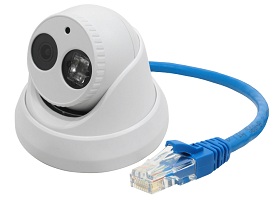Technavio’s market research analyst predicts the global network camera market to grow steadily at a CAGR of above 43% by 2021. One of the primary drivers for this market is the increase in the shift from analogue to IP cameras. The total cost of ownership of IP cameras is lower than analogue cameras, which includes their installation and maintenance costs along with labour costs. Moreover, IP cameras produce high-quality images and have built-in servers or encoders that help in image encryption, provide multi-level user access control, and aid in preventing third-party manipulation. The use of IP cameras has increased extensively in facilities, such as stadiums, city surveillance projects, and hotels, as they are relatively cost-effective and cover a large area.
One of the latest trends gaining traction in this market is the emergence of wireless IP surveillance. Wireless IP surveillance is a highly affordable and easily deployable technology that combines wireless data transmission and IP video surveillance technologies to overcome challenges such as the lack of network infrastructure and connectivity in remote locations. Furthermore, it is a robust and flexible solution that allows surveillance cameras to connect to wireless point-to-multipoint connectivity for easy data transmission to remote locations. With emerging market opportunities in transportation, shopping malls, and BFSI the market for wireless IP surveillance is expected to grow during the forecast period.
The global network camera market is fragmented with the presence of many small regional vendors and large multinational vendors. As international players are increasing their market presence, regional vendors are finding it difficult to compete with them. In order to gain a competitive advantage, the established network camera vendors are likely to acquire the niche network camera vendors to expand their product portfolios and boost their market shares during the forecast period.
In geographical terms for this market study, analysts have estimated the Americas to dominate the network camera market during the forecast period. The key factor responsible for the dominance of this segment is the increase in budget on defense and security systems deployment in the US. Moreover, the US Federal Energy Regulatory Commission is adopting certain standards for the safety of critical infrastructures in the Americas. These standards are primarily imposed in order to protect people and property. Residential security will be the key growth driver in the region over the next four years.








